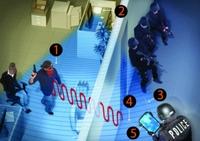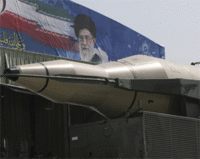-
Seeing through walls with the help of laser systems
Inspired by the erratic behavior of photons zooming around and bouncing off objects and walls inside a room, researchers combined these bouncing photons with advanced optics to enable them to “see” what is hidden around the corner
-
-
UAVs with dexterous arms to help in infrastructure repair and disaster recovery
With current technology, most UAVs perform passive tasks such as surveillance and reconnaissance missions, tasks which are performed well above ground; researchers are interested in how UAVs might interact with objects at or near ground level; a UAV with dexterous arms could perform a wide range of active near-ground missions, from infrastructure repair and disaster recovery to border inspection and agricultural handling
-
-
Seeing through walls, clearly

Research and tests show, for the first time, the ability to use t passive WiFi radar for through-the-wall (TTW) detection of moving personnel – and do so covertly
-
-
Improving landmine detection – and air travel safety

It is estimated that there are about 110 million active landmines lurking underground in sixty-four countries across the globe; each year as many as 25,000 people, most of them civilians, are maimed or killed by landmines; the mines not only kill and maim, they can paralyze communities by limiting the use of land for farming and roads for trade; researchers offer a better way to detect landmines – a method which can also be used in airports to help thwart possible terrorist threats
-
-
U.S. losing patience with Pakistan over Haqqani network’s growing boldness

Last week the Pakistan government-supported Haqqani network released a video of a 1 June operation, showing members of the group driving an explosive-laden truck into Camp Salerno, an American military base in Afghanistan, near the Pakistani border; the truck exploded, opening a breach in the camp’s fence, through which Haqqani militants entered the camp, shooting in all directions; only two GIs died in the attack — but it could have been far worse, as hundreds of American soldiers were in the mess hall only yards away; Congress has already voted to designate the Haqqanis as a Foreign Terrorist Organization (FTO), and administration officials say that the United States is “one major attack” away from unilateral action against Pakistan
-
-
DARPA demonstrates quick vaccine development for hypothetical pandemic

A World Health Organization (WHO) estimates that between 20 and 50 percent of the world’s population will be affected if a pandemic were to emerge; WHO forecasts “it may be six to nine months before a vaccine for a pandemic virus strain becomes available”; DARPA reports that rapid fire test of novel, plant-based production method delivers more than ten million doses of H1N1 VLP influenza vaccine candidate in one month
-
-
BAE Systems' defense technology to help Team GB win Olympic medals
Scientists and engineers from BAE Systems have been applying defense and security technology to help the British Modern Pentathlon team to evaluate their high-tech laser pistols, which were introduced at the beginning of the 2011 season, replacing traditional air pistols
-
-
A device used to measure nuclear weapons effects is now used for rocket propulsion system
Can a device formerly used to test nuclear weapons effects find a new life in rocket propulsion research? That is the question in which researchers seek an answer; when assembled, the device will tip the scales at nearly fifty tons, and will be “one of the largest, most powerful pulse power systems in the academic world,” according to one researcher
-
-
Researchers say spoofed GPS signals can be countered
From cars to commercial airplanes to military drones, global positioning system (GPS) technology is everywhere — and researchers have known for years that it can be hacked, or as they call it, “spoofed”; the best defense, they say, is to create countermeasures that unscrupulous GPS spoofers can not deceive
-
-
Milestone for a Raytheon bomb which acquires, tracks, and then hits moving targets
Raytheon said its Small Diameter Bomb II (SDB II) program achieved a milestone when it successfully engaged and hit a moving target during a flight test at the White Sands Missile Range, New Mexico; the bomb, released from an F-15E, acquired, tracked, and guided to a moving target using its tri-mode seeker, scoring a direct hit
-
-
Using dolphins’ signal processing method for sea-mine detection

One way for Iran to close the Straits of Hormuz to shipping is to place thousands of sea mines in the water; research examine how dolphins process their sonar signals, using the findings to provide a new system for man-made sonar to detect targets, such as sea mines, in bubbly water
-
-
Unmanned systems emulate animals’ conditioned fear-response mechanism for self-preservation
When animals in the wild engage in eating or grazing, their eyes, ears, and sense of smell continuously monitor the environment for any sense of danger; researchers developed a similar conditioned fear-response mechanism for unmanned systems
-
-
Study suggests ways to cut billions from Pentagon budget
The Department of Defense currently spends $400 billion each year acquiring products and services from defense contractors. About $100 billion of the money is spent on administrative costs; one way to reduce the high administrative cists could be “relational contracting,” a concept that has helped private industry dramatically reduce the costs of doing business
-
-
Iran could test-fly ICBMs capable of striking U.S. within three years: Pentagon

A Pentagon report submitted to Congress on 29 June says Iran continues to make large strides in virtually all conventional, unconventional, and nuclear categories; the report focused most extensively on Iran’s inventory of ballistic missiles, and warned that Iran may be able to test-fly an inter-continental ballistic missile (ICBM), capable of striking American soil, within three years’ time; Iran also continues to supply men, money, training, and even sophisticated weapons systems to some of the world’s best-known terror groups
-
-
ONR new universal gateway improves network data sharing on Navy ships
On any Navy destroyer, cruiser, or carrier today, there are two networks: one for combat systems (weapons and sensors) and one for command and control, or C2, which also encompasses intelligence, surveillance, and reconnaissance; there are some thirty interconnections between the two networks, making it difficult to integrate data into a real-time common operating picture, as well as expensive to maintain; the Office of Naval Research’s Universal Gateway, which collapses the 30 connections into a single portal
-
More headlines
The long view
Bookshelf: Smartphones Shape War in Hyperconnected World
The smartphone is helping to shape the conduct and representation of contemporary war. A new book argues that as an operative device, the smartphone is now “being used as a central weapon of war.”
